Span 39.5 cm / 15.5 in
Weight 40 g / 1.4 oz
The concept:
- twinboom layout
- speedy
- easy to build
- few parts
- good flight characteristics
- exclusive colouring
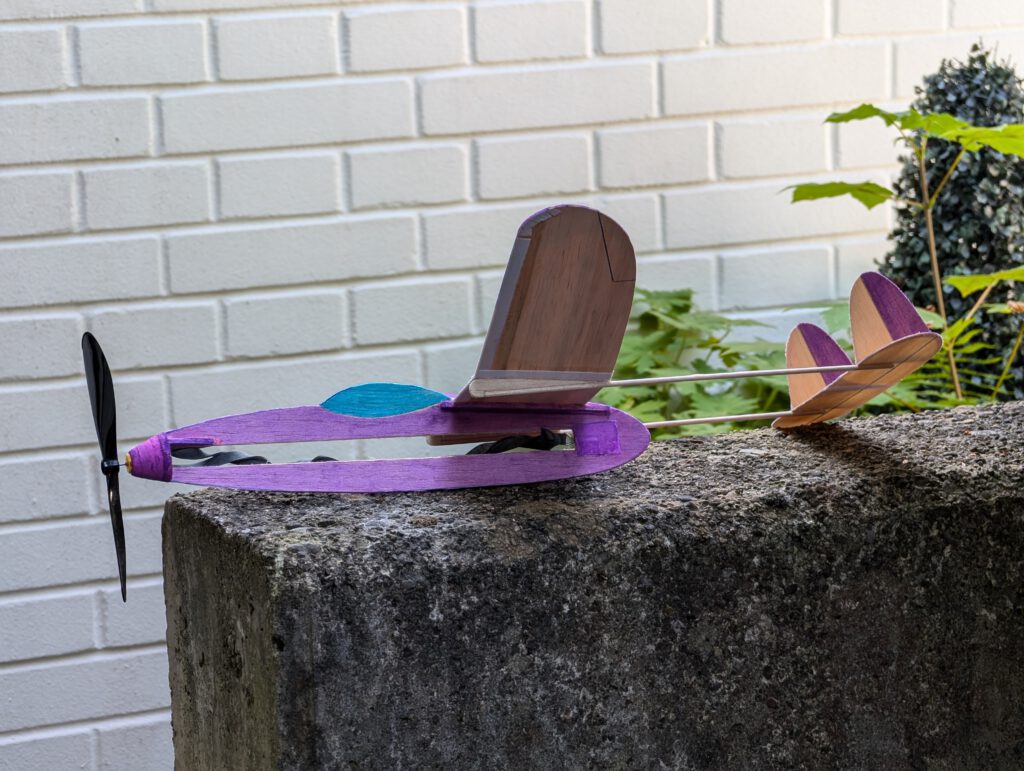

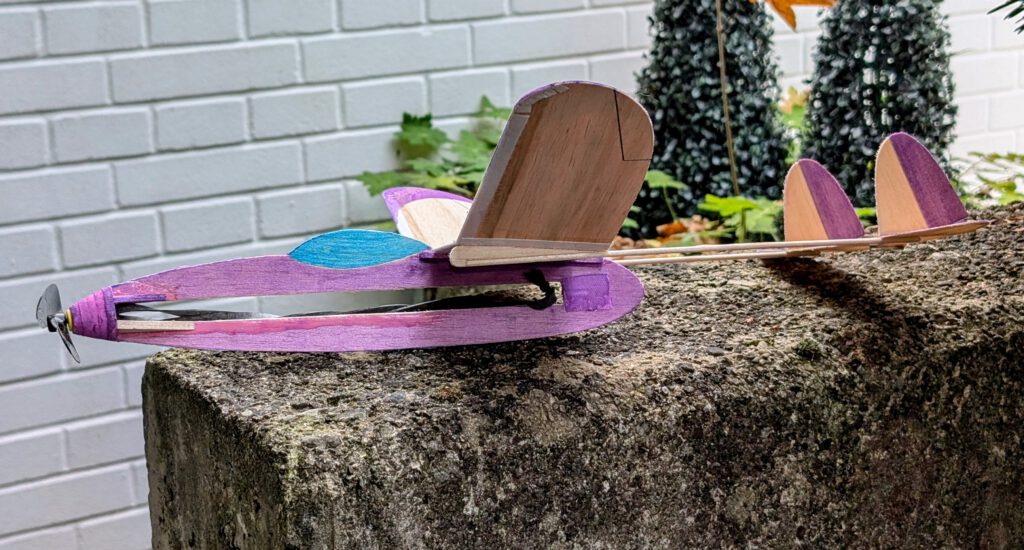
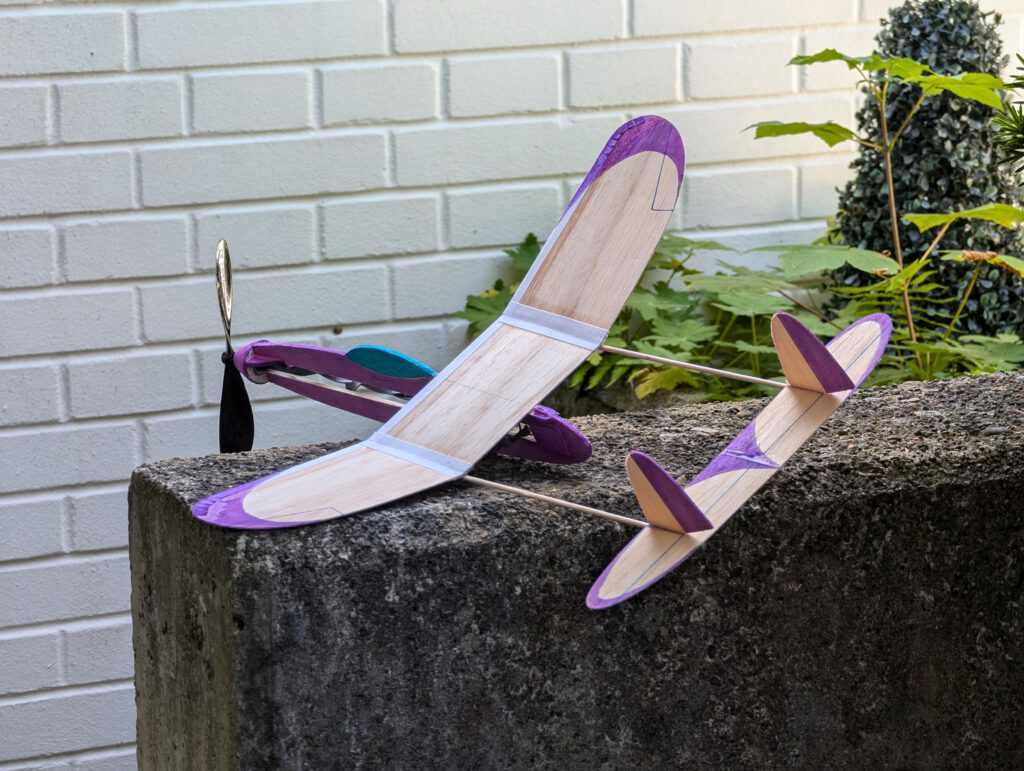
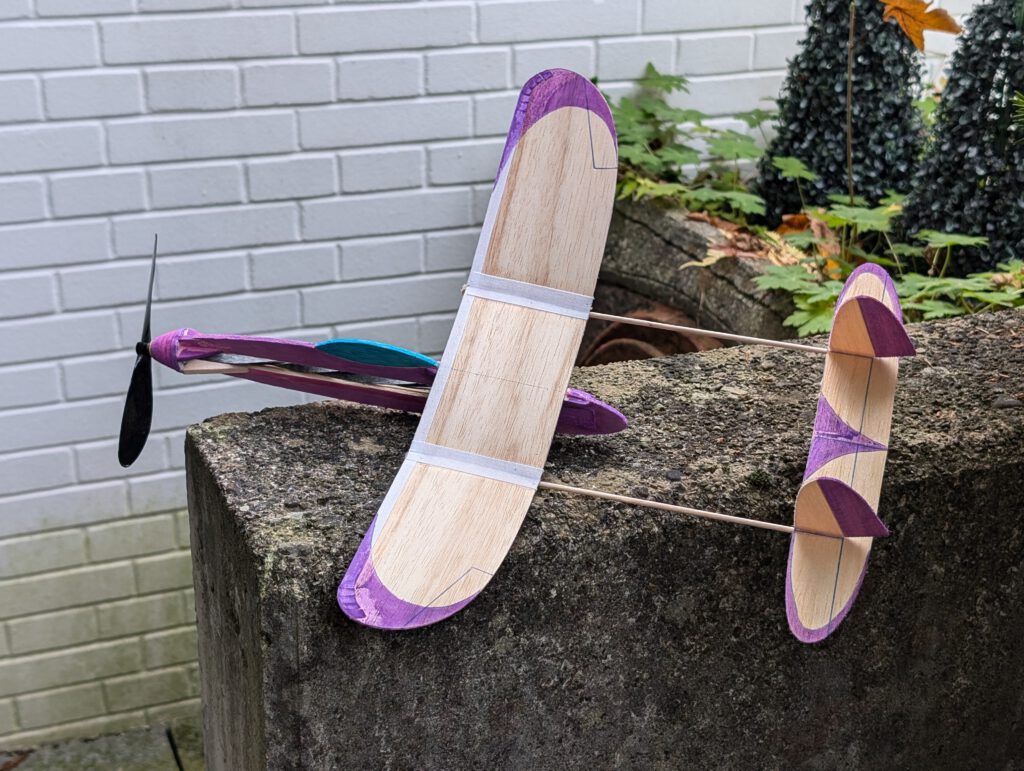
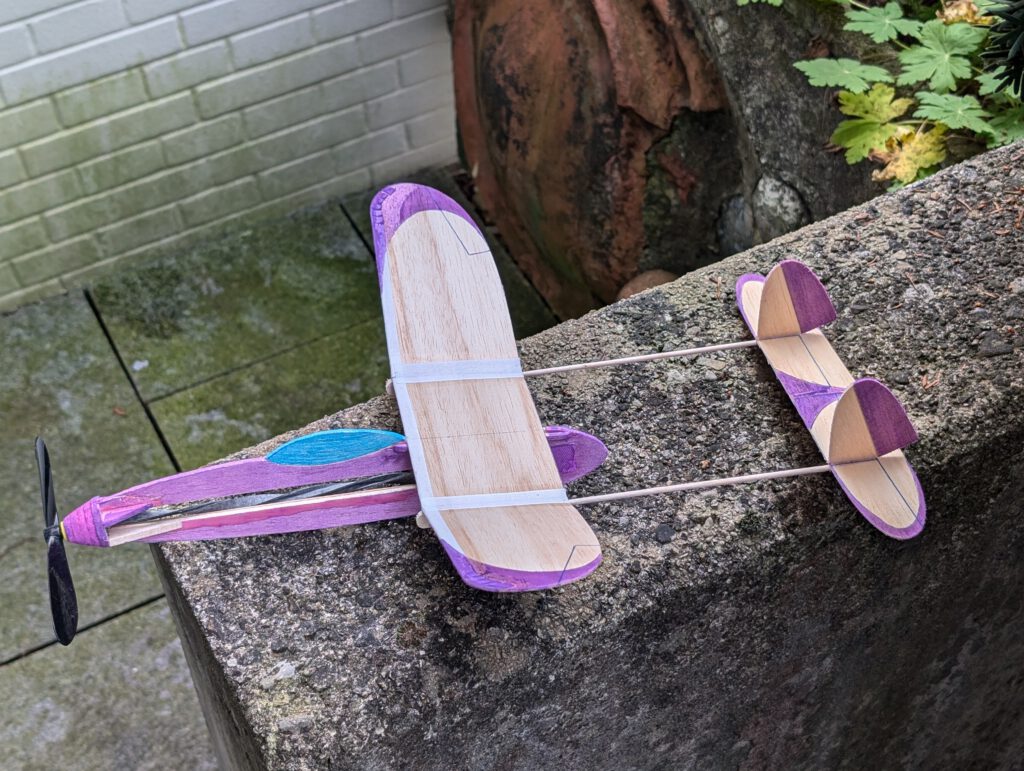
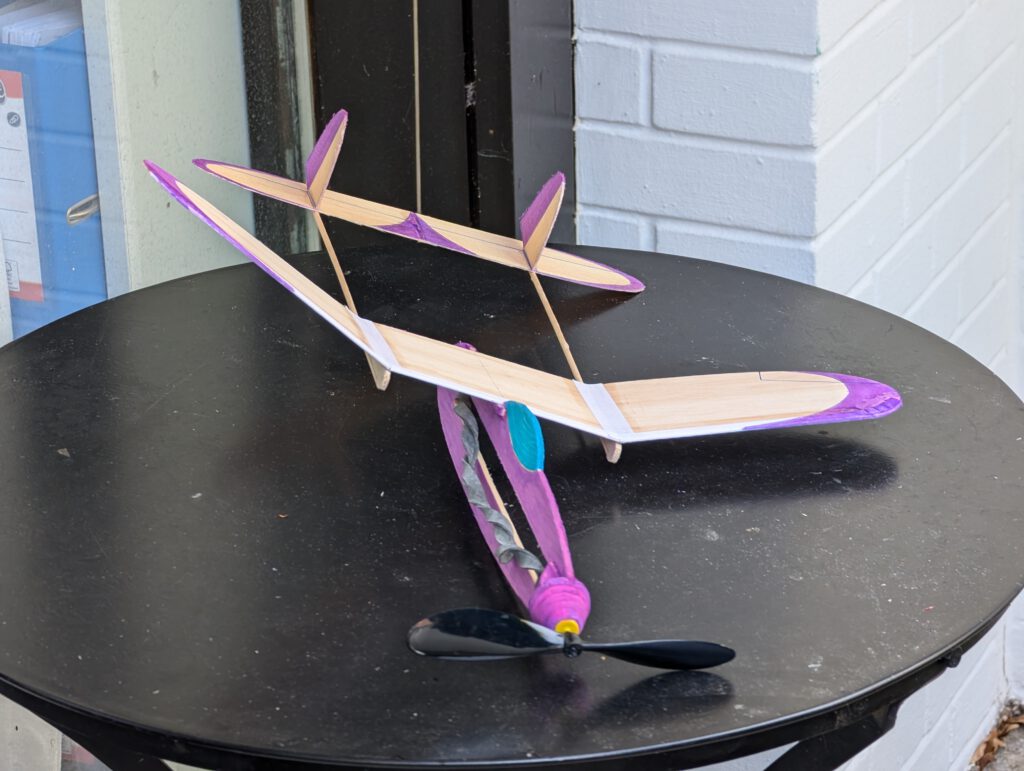
Building the rubber powered balsa sheet model Study in purple
Materials:
Fuselage gondola: B 3; parts for fuselage nose cone: B 5; triangle shaped cone supports: B 5; rubber hook: piano wire 1.2 or 1.5 mm diameter; booms: barbecue skewer chopsticks diameter 3 mm or equivalent from pine wood; boom-wing connecting parts: B 3; wings: B 1.5; wing supports: B strips 3 x 3 or 5 x 5; horizontal stabilizer: B 1; fins: B 1; linen band width 1 – 1.2 cm / ½ in; ballast: small piece of lead or scrap metal; commercial airscrew 15 cm / 6 in diameter; black rubber.
Assembly:
Cut out all balsa parts. Sand well. Transfer outlines of cockpit, rudders etc. from paper to wood with pen. Do the colouring of your model right now.
Fuselage-gondola:
Bend as shown on plan piano wire into given hook shape. Carve out with knife and round file seat for rubber hook on left or right side of fuselage gondola rear end. Cement hook in place and cover hook area with linen band as seen on photos. Let dry. Cement wing support strips in to their position on both sides of fuselage gondola, use for this needles or clamps to hold in place.
Cement B 5 nose cone parts one on the other as shown on plan and let dry. Sand well than treat this part with balsa putty. When dry sand again. May be this procedure has to be repeated. When the nose part is smooth you can start to carve out opening which holds prop-bearing. Start from behind and don’t do it in a hurry. A little electric drill machine can be useful.
Cement nose cone to fuselage according to photos. When dry add triangle shaped supports two on each side.
Booms:
Cement boom-wing connecting parts to skewer chopsticks as shown on plan. Let dry. Sand.
Wing:
Cement linen band along the whole leading edge of your still one piece wing. The band should embrace the leading edge in form of the letter U. Work carefully and precisely as uniformity on the leading edge looks professional afterwards. When dry take a saw and cut off both wing outer sections. Fix wing center section with needles on your building board. Underlay tips of wing outer sections according to given dihedral and join both to center section. Cover joining areas with ample glue and linen band. Let dry.
Mark positions of fuselage gondola and booms on wing with pencil.
Final Assembly:
The following step requires great care. Fix right and left boom on plan with needles. Both parts must be absolutely parallel and straight. Visual check from all sides. Cement now wing on both boom-wing connecting parts and let dry.
Cement horizontal stabilizer on rear end of booms. Check symmetry. Use needles to hold in place. Let dry.
Cement both fins on horizontal stab. Once more check symmetry and check 90° angle.
Take two voluminous books or cardboard boxes or something comparable of identical size and place one next to the other at a distance of half an inch.
Remove wing-boom-empennage assembly from building board and cement it on the fuselage-gondola. Hold in place with needles and observe diligently symmetry. Now put the model on both books/boxes with its fuselage gondola hanging free between books/boxes. Let entirely dry.
Insert rubber-motor and airscrew. Balance your model in accordance to given CG on plan. Do your first unpowered test flights over tall grass.
Note that a correct CG is essential for successful flights!
Observations: Model is really fast. Fly over grass, preferably tall grass. If there is no grassland where you live reinforce front fuselage with an extra plywood or CFK strip. Six inch airscrew was best choice, no bigger prop needed. When you test CG don’t be surprised when you have to add small amount of ballast in the rear (on horizontal stab centre underside).
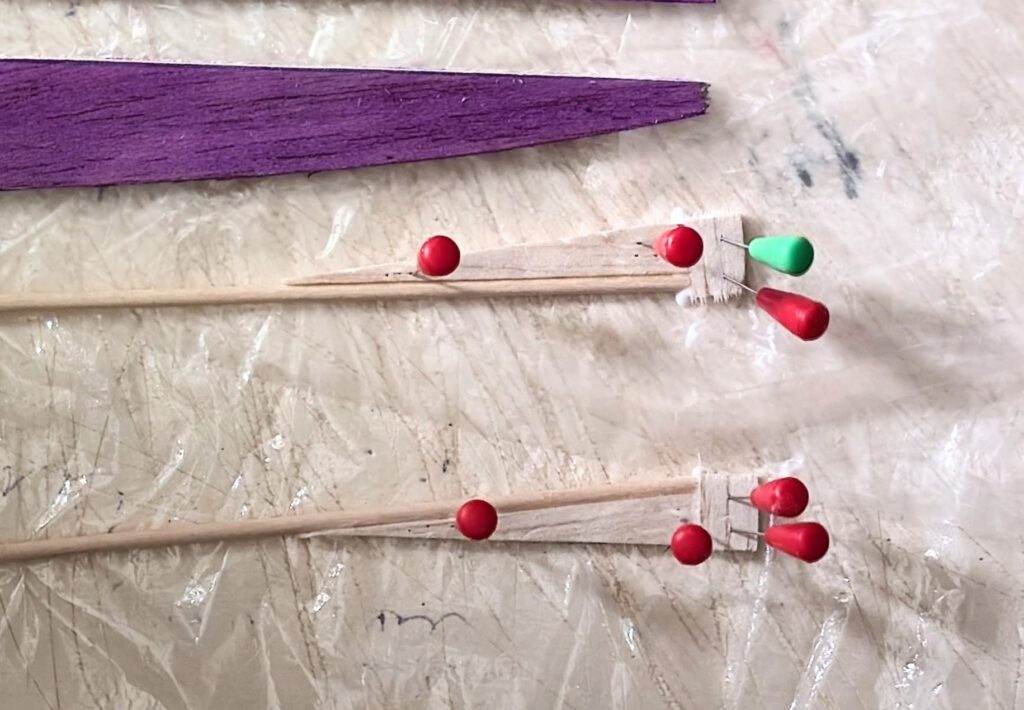
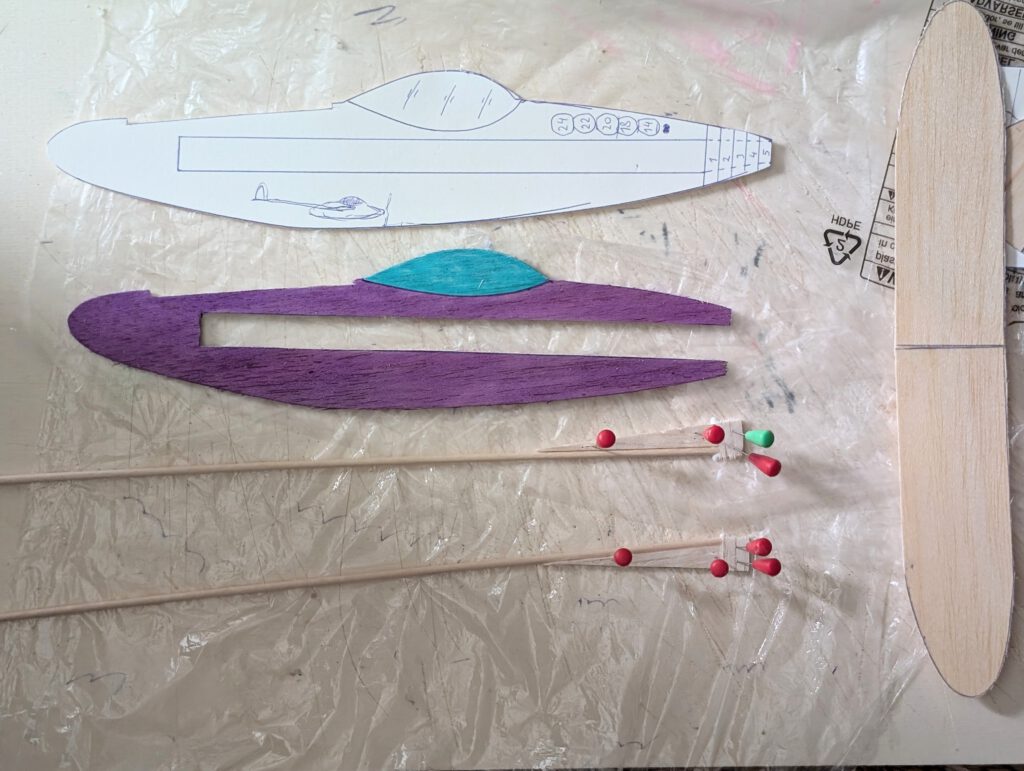
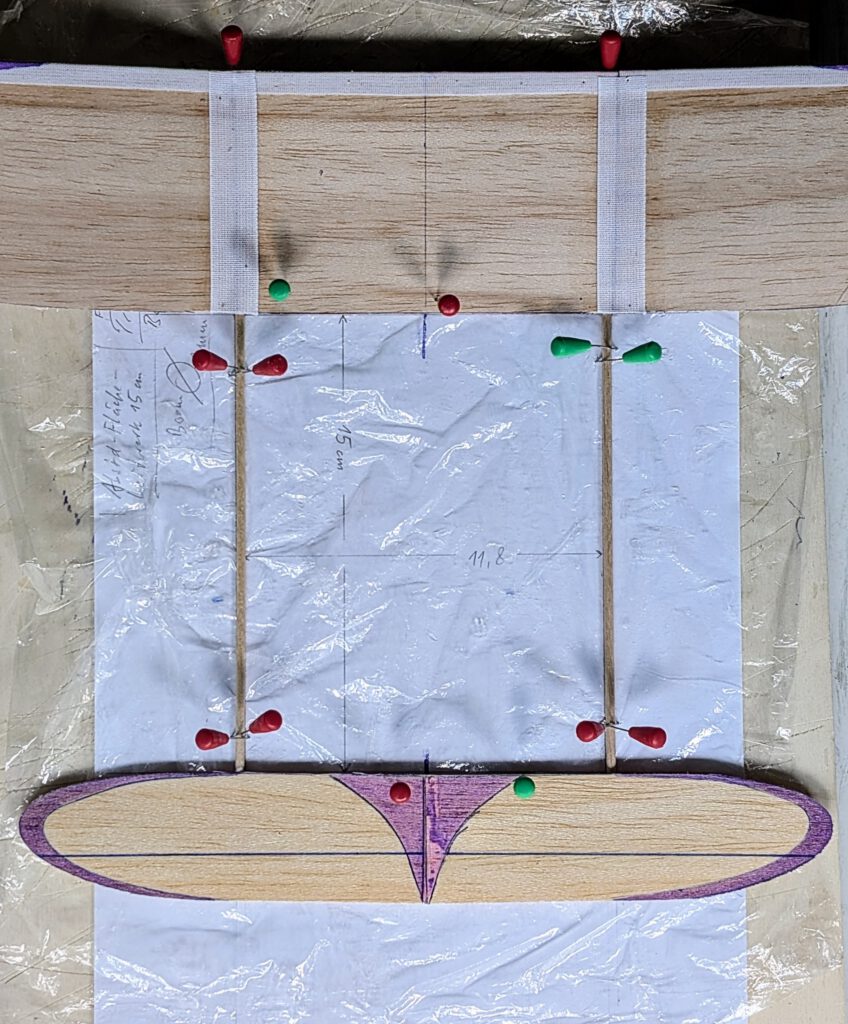
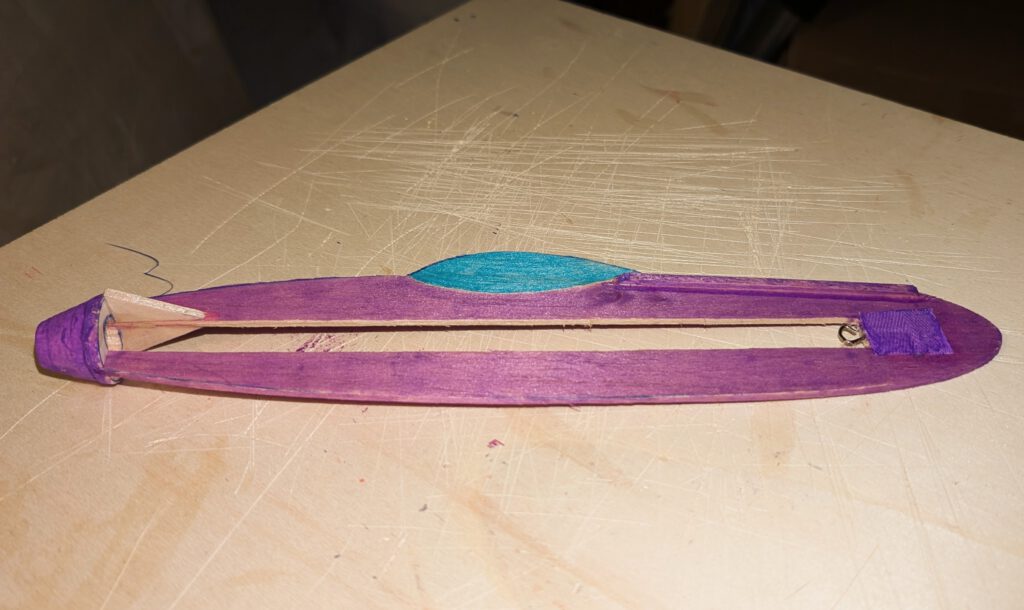
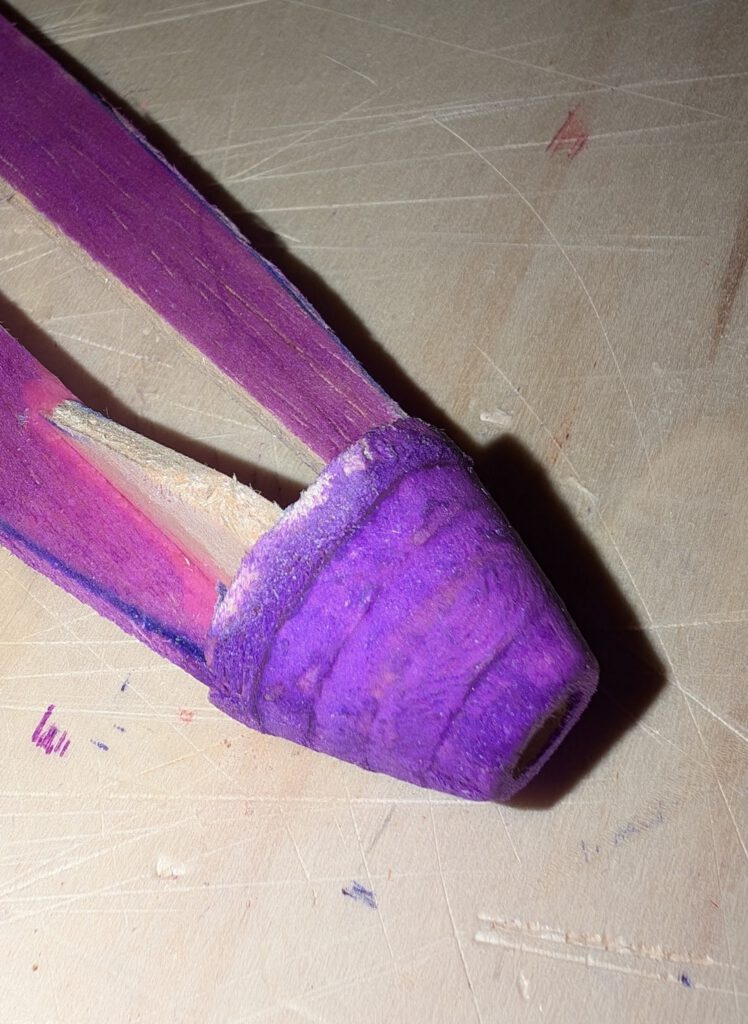
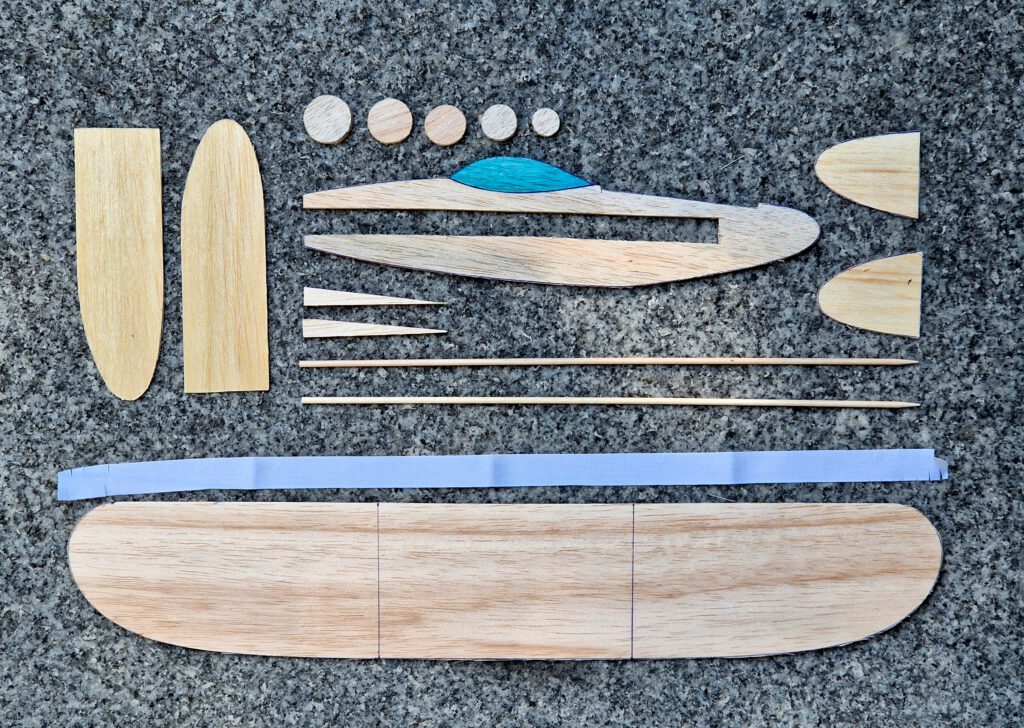
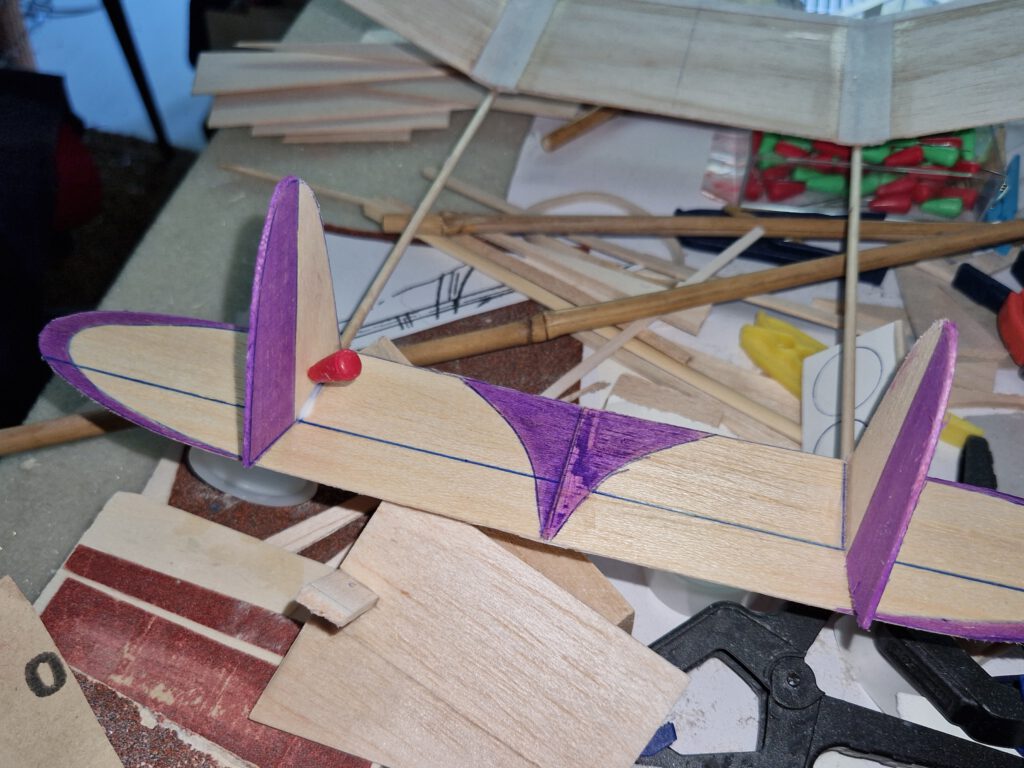
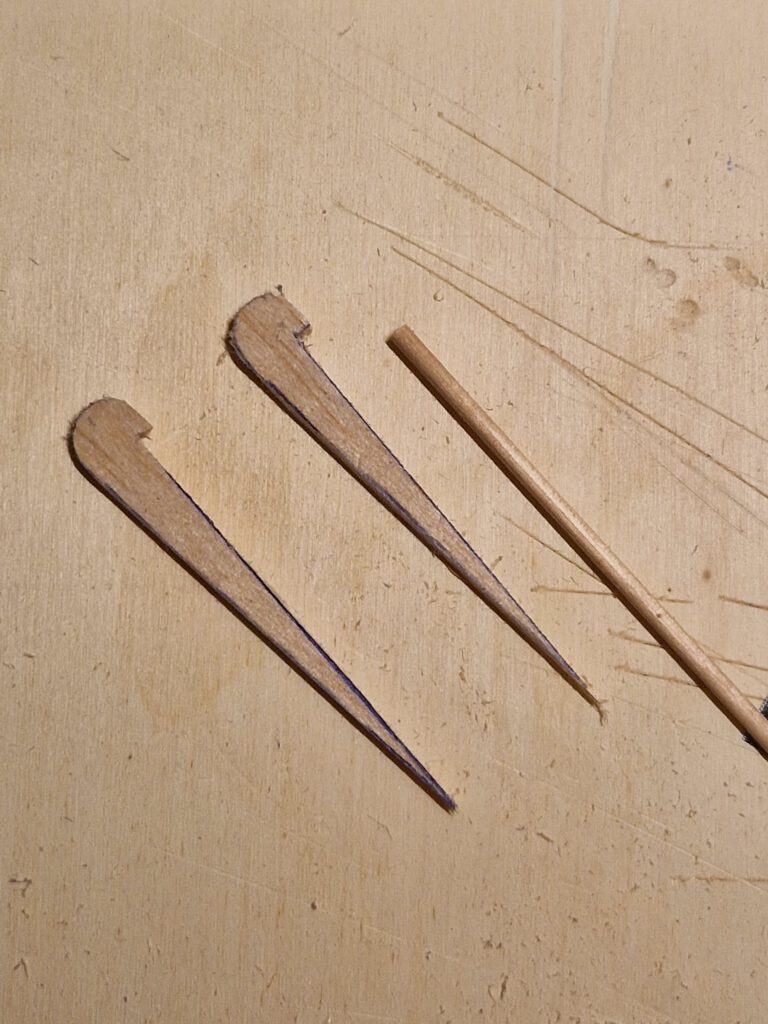
Iyi uçuşlar! (Pleasant flights!)
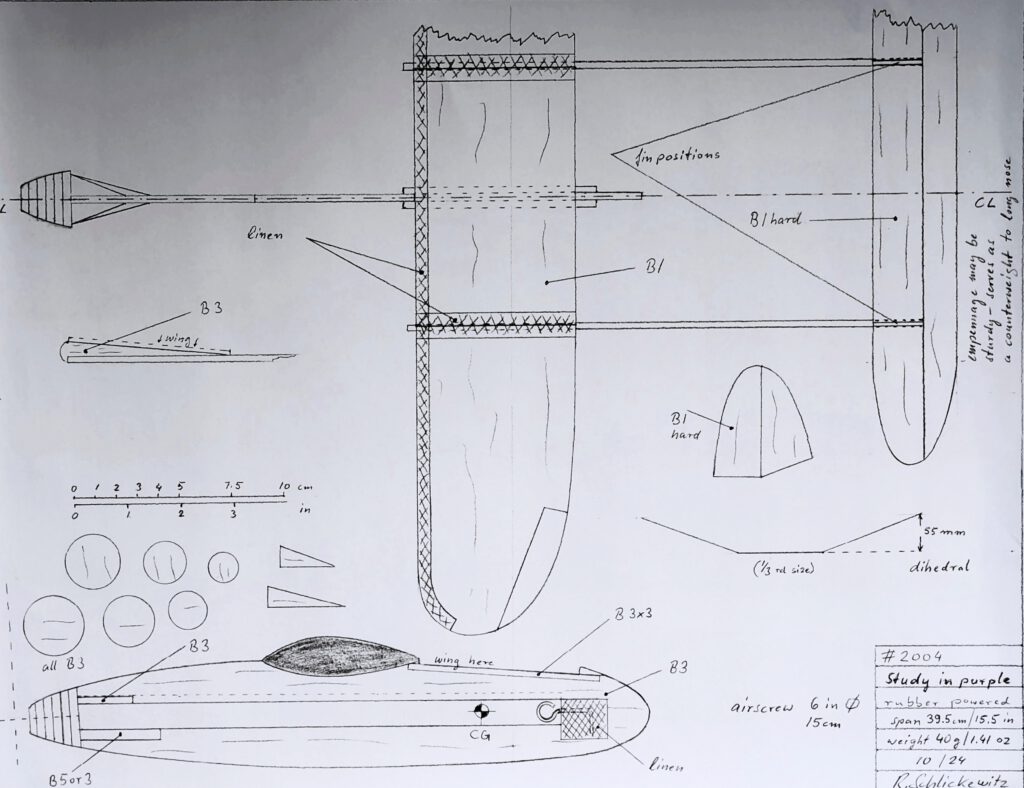
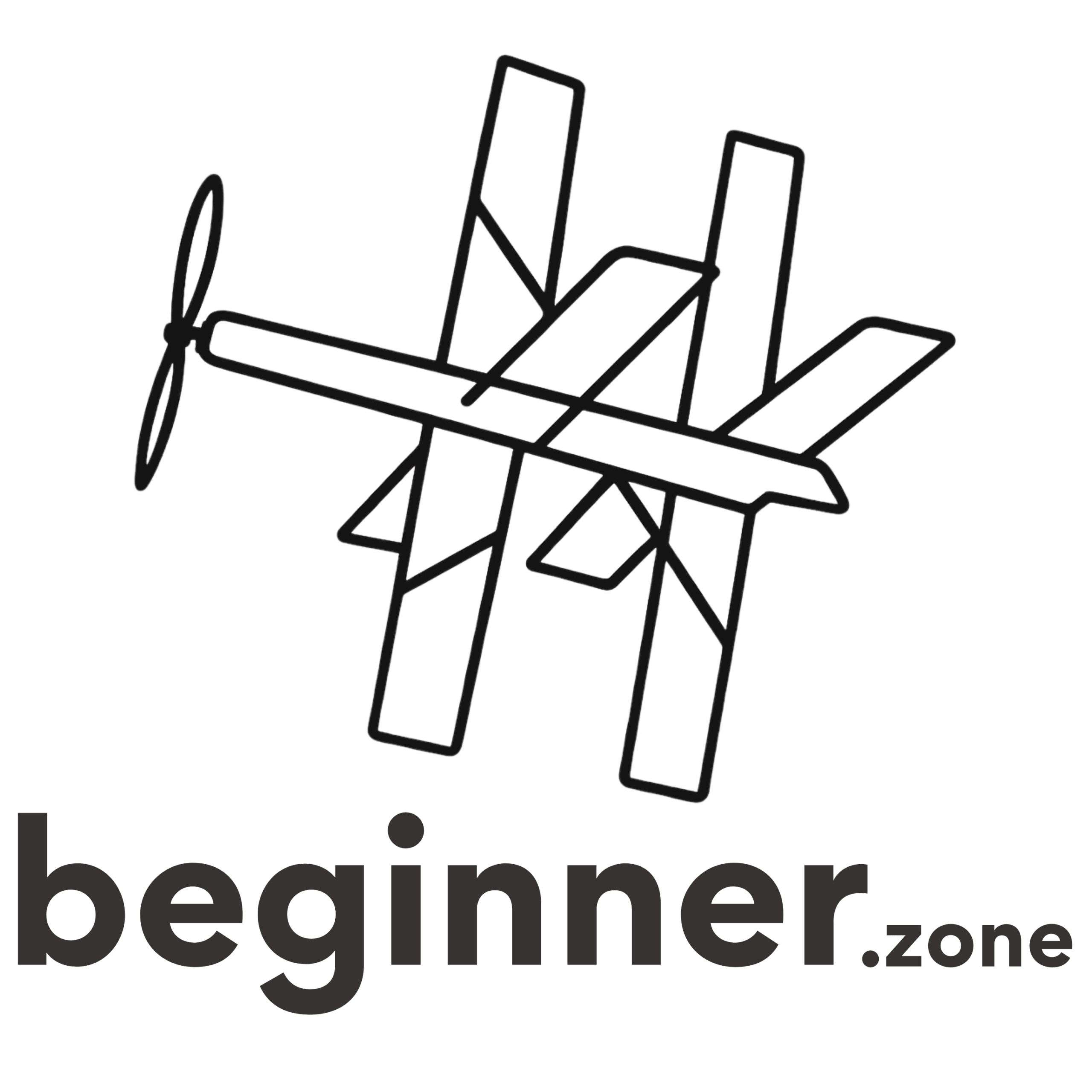
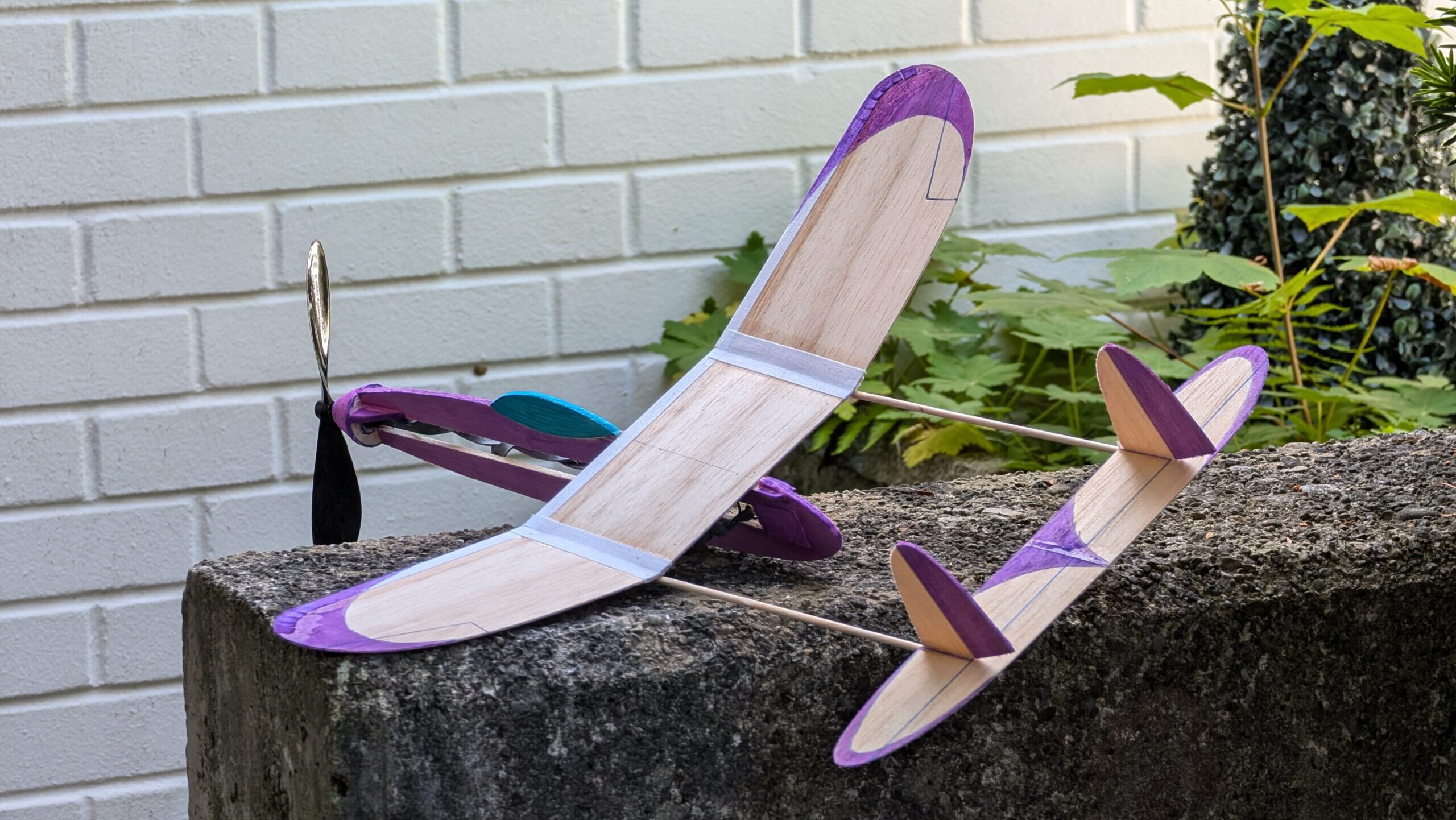
Leave a Reply